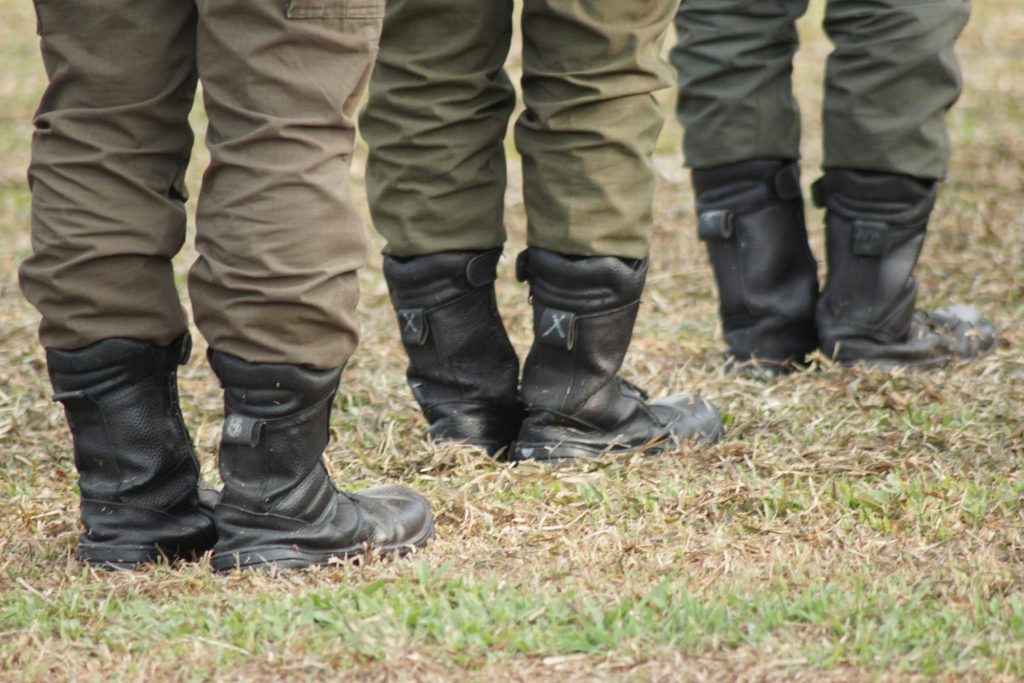Aaron Smale: An apology both sincere and hollow
A leading investigative journalist reflects on a day that victims of state and church abuse have fought for their whole lives.
The sexual harm helpline can be accessed free, 24 hours a day, 7 days a week by phone, text, website, online chat and email.
Opinion: As the ink dries on the Royal Commission’s report in abuse in state care, what must it be like for survivors to witness the Government’s direction on boot camps for young offenders?

Opinion: ‘Boot camps’ serve only one real purpose – they allow politicians intent on ignoring evidence to propel a vision that something is being done. It’s a chance for commentators and the public to hark back to a golden age when the whip ruled and people knew their place. As a public relations exercise for a government ‘coming down hard’, it fits the bill.
After that, there’s little left.
The research on boot camps, here and overseas, shows us that they are the worst criminal justice response we can take. There is a reason they don’t get used among countries interested in reducing or preventing crime.
New Zealand has, of course, already been down the boot camp track. Through the 1980s, we ran the short, sharp, shocking sentence of corrective training – three months of screaming military discipline that looked to tire and scare young people out of offending.
In 1983, the Department of Justice outlined that 71 percent of ‘trainees’ had been re-convicted in just one year. In 1997, official advice to the minister of corrections clarified that 92 percent of all those placed on corrective training in 1988 had been re-convicted: 92 percent! This astonishing rate of re-conviction – the highest, by some margin, of any sentence in our history – showed the boot camp as being far more problematic than doing absolutely nothing.
Boot camps are criminogenic. They create more crime, rather than reduce it. The kids ‘fall out’ tougher and quicker.
The data on boot camps around the world demonstrate a similar searing picture of failure, and of high costs. As one example: in 2015, a trial of boot camps run out of Far North Queensland (from 2013 to 2015) was ended after it became clear the costs were more than double of ‘youth detention’ with no discernable improvement in reoffending rates. At the time, attorney-general Yvette D’Ath remarked it was “an expensive failure”.
The costs do not end there.
It seems incongruous to have this government proposal land around the time that the Royal Commission into Abuse in Care completes its final report. Over the past few years, we’ve heard person after person relay their long-held suffering and trauma from violent state and religious institutions that advanced military regimes, drills and marching discipline. Survivors have exposed the terrors of punishing hierarchies and extreme punishments: barrowing sand, digging holes, extreme physical training, isolation on remote islands, being hunted down, being violently and psychologically assaulted.
Our places broke kids down. Most were Māori kids, as they came to be the primary state targets. The institutions looked to terrorise and shame them into submission. For many youngsters, the choice came: fight or flight? Lots chose to fight. The wreckage from the state violence is everywhere. We can see it in so much of our ‘social problem’ data, including in the numbers who progressed into gangs or the majority of people in prison having care histories. There have been so many other losses.
We have not even yet reckoned with our harm-filled past of ‘military-style’ or ‘wilderness’ interventions in ‘youth justice’ or ‘care’ – so brutally exposed in places like Whakapakari, Moerangi Treks, Kohitere, Hokio Beach or Owairaka or a multitude of other places. The state has not yet apologised, or implemented a proper redress scheme, or brought anyone to account for all this violence.
Instead, we are now given a new ‘side-show’ – roll up, roll up for a repeat performance.
I cannot imagine how it must be for a survivor of abuse in care to hear the Government’s new direction this past week. The ink is not even on the final page of the Royal Commission’s report, let alone dry. There is, it seems, to be no listening, no learning’ despite the promises. Or, perhaps there has been some ‘learning’, as the children’s minister announced that the “military-style academy” would be accompanied by a “trauma-informed care approach”. It’s an exceptional form of cutting to the chase – dealing with trauma as it happens.
There is a political sense that something must be done about ‘young offenders’. We have long-established evidence on what works. And, while military-style punishments might titillate an audience, they are not on the list.
This is an approach known to harm children. Why would we want to do that? Professor Joanna Kidman recently reflected that it illustrates a ‘child hate’ (in the same way as we might talk about homophobia, Islamophobia, or misogyny). And, indeed, children and young people are especially vulnerable to official attempts to vilify, control, punish and harm them. There is a racialised continuum of rejection and violence that runs through our institutional responses, from care to policing to residential institutions or prisons. This latest proposal illustrates more of the same. It’s putting the boot in, once more.